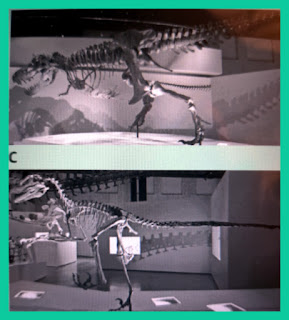Disclosure / Disclaimer: I received this ebook from Columbia University Press via EdelweissPlus, free of charge, for review purposes on this blog. No compensation, monetary or in kind, has been received or implied for this post. Nor was I told how to post about it, all opinions are my own
In Fantastic Fossils, Donald R. Prothero offers an accessible, entertaining, and richly illustrated guide to the paleontologist’s journey. He details the best places to look for fossils, the art of how to find them, and how to classify the major types.
Synopsis:
Nothing fills us with a sense of wonder like fossils. What looks at first like a simple rock is in fact a clue that reveals the staggering diversity of ancient environments, the winding pathways of evolution, and the majesty of a vanished earth. But as much as one might daydream of digging a hole in the backyard and finding a Tyrannosaurus, only a few places contain these buried treasures, and when a scientist comes across a remnant of prehistoric life, great care must be taken. What do budding paleontologists need to know before starting their search?
In Fantastic Fossils, Donald R. Prothero offers an accessible, entertaining, and richly illustrated guide to the paleontologist’s journey. He details the best places to look for fossils, the art of how to find them, and how to classify the major types. Prothero provides expert wisdom about typical fossils that an average person can hope to collect and how to hunt fossils responsibly and ethically. He also explores the lessons that both common and rarer discoveries offer about paleontology and its history, as well as what fossils can tell us about past climates and present climate change. Captivating illustrations by the paleoartist Mary Persis Williams bring to life hundreds of important specimens. Offering valuable lessons for armchair enthusiasts and paleontology students alike, Fantastic Fossils is an essential companion for all readers who have ever dreamed of going in search of traces of a lost world.
Review:
Initally it seemed like this book was geared toward kids, and families, with sections like How to find Fossils and Where to find Fossils. BUT having gone through the book, it really is a COMPLETE course in fossils/geology/biology basics, suited to high schoolers! Add in some field trips/field research, and this could easily be a science class on their transcript! Depending on your world view, you may want to address the carbon dating sections, but on the whole it is a sound geology based book. I LOVE the diagram above that visually explains the animal classification system so easily! That is one you may want to borrow for your middle schooler's science class! there is plenty for adults and kids to learn about in this hefty book!
My only quibble is that the pictures could be better. Even college texts nowadays are colorful and eye catching, whereas the pictures in this book are pretty much black and white. And better pictures (like the ones below), would be more helpful in enforcing what is being taught. For example, below you have the Trex on top and velocoraptor on the bottom. Does the raptor look like he is the size of a turkey? Nope, so the pictures seem a bit opposite of what is being taught at times. A little better editing, and this could be the go-to source for teaching about fossils! If you are considering adding a fossil/geology class to your high schoolers course work, this is the book you need!
About the Author:
Donald R. Prothero is a Research Associate in Vertebrate Paleontology at the Natural History Museum of Los Angeles County. He has taught college geology and paleontology for 40 years at institutions such as Columbia University, Vassar College, Knox College, and Pierce College, and currently at Cal Poly Pomona. For 27 years, he was Professor of Geology at Occidental College in Los Angeles and Lecturer in Geobiology at the California Institute of Technology in Pasadena. He earned his M.A., M.Phil., and Ph.D. degrees in geological sciences from Columbia University. He is the author of over 300 scientific papers published in leading journals and over 30 titles in geology, paleontology and evolutionary biology.



Comments
Post a Comment